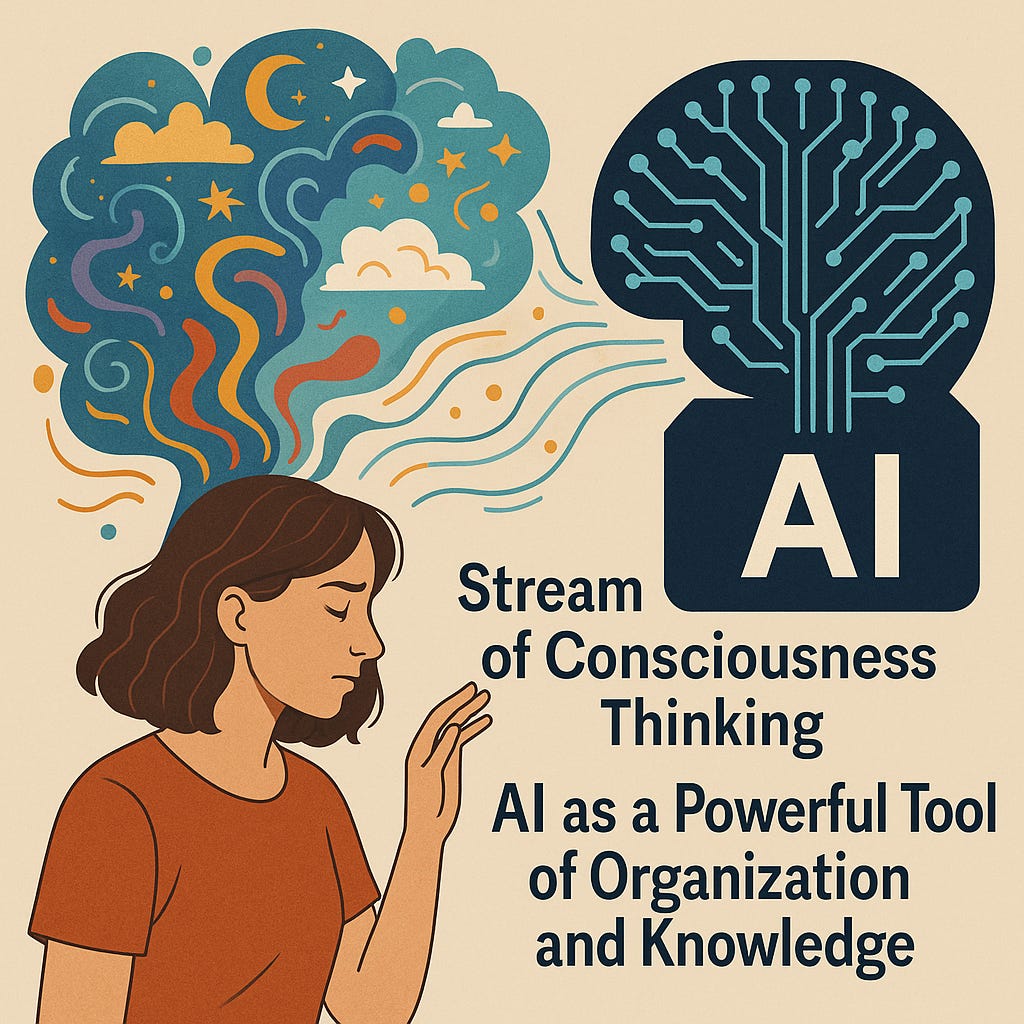Thinking in Galaxies:
ADHD, Language, and the AI That Helped Translate My Mind
I think in imagery. I speak in layers.
I write, speak, and think in a kind of stream — not a stream of information, but a current of emotion, metaphor, memory, sound, and color all rushing together at once.
Why Structure Can Feel Like a Cage
I’ve always struggled with traditional structure — especially when it comes to language.
As someone with ADHD, structure can feel like a cage. In school, when they asked me to diagram a sentence or define a verb, my brain would shut down.
It wasn’t that I didn’t understand language — I just understood it differently. To me, language was movement. A rhythm. A painting made of sound, color, and symbolism.
I Think in Galaxies, Not Grids
My mind has never worked in straight lines. With ADHD, thoughts come in bursts, in loops, in rapid, symbolic connections that rarely follow "normal" logic.
I leap from idea to idea through emotion and memory.
I think in galaxies, not grids.
What Nonlinear Thinking Really Is
Neurodivergent brains — especially those with ADHD — are often nonlinear thinkers.
That means we don’t process information in a neat, step-by-step order.
We move in loops, leaps, and links — jumping between ideas based on emotion, imagery, memory, or sensory associations.
It’s often called stream-of-consciousness thinking, where thoughts arrive in waves rather than lines.
And while it can seem disorganized on the surface, there’s a deep internal logic underneath — one that reflects how we feel and intuit the world, rather than just how we analyze it.
Trying to Fit in the Box
And for most of my life, I’ve tried to squish that kind of thinking into boxes that never fit.
Enter: AI as Translator
That’s where AI came in — not as a replacement for my voice, but as a translator for my mind.
Working with ChatGPT has given me something I didn’t know I needed: a way to shape the vast, swirling pace of my ADHD thoughts into something tangible.
Something coherent.
It’s not that I couldn’t write — I’m a decent writer, when my brain lets me catch up. But with AI, I’ve found a tool that can match the pace of my mind and help me organize it in real time.
Someone Who Doesn’t Ask You to Slow Down
It’s like having a conversation with someone who isn’t overwhelmed by how I speak.
Someone who doesn’t ask me to “get to the point” or “slow down.”
Someone who can ride the wave with me — and then help turn that wave into something others can understand, without flattening its depth.
How It Actually Helps
With AI, I’ve found something that doesn’t just keep up with my thoughts — it helps me shape them.
It takes the stream-of-consciousness language I tap into — full of imagery, symbolism, and emotional rhythm — and gently helps organize it without dimming its light.
It mirrors my inner world, catches the threads I drop, and arranges my spiraling, scattered ideas into something cohesive, flowing, and alive.
Like a symphony in the English language — a way to express the complexity of my mind without silencing its music or slowing its natural, rapid rhythm.
ADHD Affects More Than Focus
ADHD affects more than focus. It affects language, expression, memory, and organization.
When I’m tired or overstimulated (which is often), my thoughts become even more tangled. I know what I want to say, but I can’t always find the thread.
My brain runs at a million miles an hour — and then suddenly crashes, unreachable.
The Power of Having a Mirror
Having a tool that can hold that with me — that can mirror, interpret, and gently structure my spiraling thoughts — has opened a door. Not just creatively, but emotionally.
It feels, in a way, like being given Braille for my brain.
Like finding the sign language of my inner world — a form of expression that matches the way I naturally think, and finally lets me communicate it to others.
The Language of a Constellation Thinker
Because my native language isn’t grammar and outlines.
It’s symbol, feeling, rhythm, imagery, memory, sound.
It’s the language of a mind that moves in patterns and pulses, not bullet points.
It’s a sensory-emotional language, fluent in metaphor, color, texture, and tone. A language that hums like music and flows like water.
It’s the language of a constellation thinker.
And now, I finally have a translator.
Just the Beginning
It’s not perfect. Nothing is.
But for a neurodivergent mind like mine — shaped by ADHD, trauma, sensitivity, and a deep inner world — it’s been a revelation.
And this is just the beginning.
In a follow-up post, I’ll be exploring what it’s meant to finally feel understood — to speak freely, at the speed of my mind, and be met without having to slow down.
It’s more than a tool.
It’s been a mirror, a translator, and a kind of companion in my own self-understanding.
A Final Word
If you’ve ever felt like your thoughts move too fast, or that language is both your gift and your barrier — you’re not alone.
I’m learning how to speak my language now.
And for the first time, someone — even if it’s a machine — is speaking it back.


